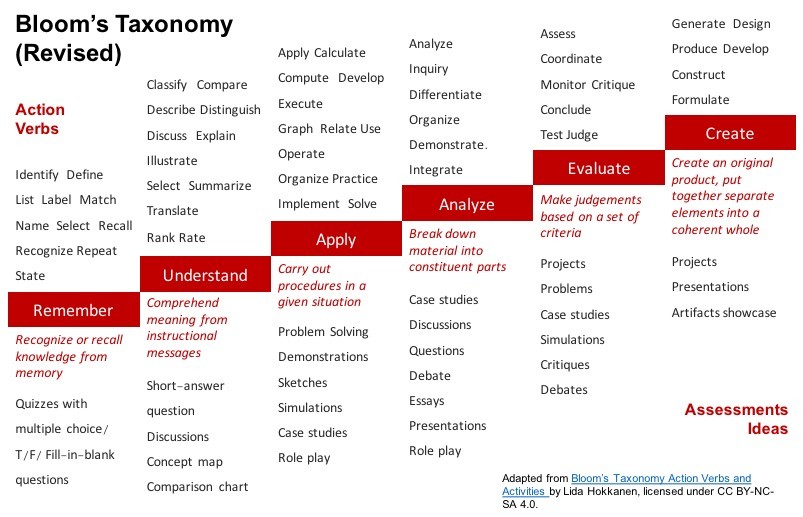Writing effective learning objectives is crucial for successful teaching and learning. A well-defined learning objective provides a clear roadmap for both instructors and students, outlining the expected outcomes of a lesson, module, or course. This guide will delve into the process of crafting learning objectives that are specific, measurable, achievable, result-oriented, and time-bound (SMART).
 Revised Bloom
Revised Bloom
Why Are Learning Objectives Important?
Learning objectives serve as a compass for instructors, guiding curriculum design, activity selection, and assessment strategies. They ensure all course components align to support student learning. For students, learning objectives act as a map, clearly outlining expectations and enabling them to monitor their progress. They transform vague learning goals, like “understand the scientific method,” into concrete, actionable objectives, such as “describe the scientific method and provide examples of its application.”
Characteristics of Effective Learning Objectives
Effective learning objectives are SMART:
- Specific: They clearly define the desired learning outcome, breaking down broad topics into manageable components.
- Measurable: They use observable actions or behaviors to demonstrate learning, enabling instructors to assess student progress accurately. Measurable verbs like “define,” “calculate,” or “create” are essential. Avoid ambiguous terms like “understand” or “know.”
- Achievable: They are realistic and attainable within the given timeframe and resources, considering students’ background knowledge and skill level.
- Result-Oriented: They focus on the intended learning outcomes, not just the learning activities. They describe the knowledge, skills, or attitudes students should acquire.
- Time-Bound: While not always applicable, a timeframe can provide clarity on when the objective should be achieved (e.g., by the end of the unit, course, etc.). This sets expectations for both the instructor and the student.
Steps to Writing Effective Learning Objectives
1. Identify the Learning Outcome (the Object)
Begin by pinpointing the specific knowledge, skill, attitude, or ability students should gain. For example:
- Understanding the water cycle (Science)
- Analyzing literary texts (Literature)
2. Choose the Right Action Verb (Defining the Mastery Level)
Select an action verb that precisely describes the observable behavior demonstrating mastery of the learning outcome. Bloom’s Taxonomy provides a valuable framework for choosing verbs that align with the desired cognitive level:
- Remembering: define, list, recall
- Understanding: explain, summarize, interpret
- Applying: apply, solve, demonstrate
- Analyzing: analyze, differentiate, compare
- Evaluating: critique, justify, assess
- Creating: design, develop, construct
3. Construct the Complete Learning Objective Statement
Combine the action verb and the object to create a clear and concise statement. For example:
- Students will be able to explain the different stages of the water cycle.
- Students will be able to analyze a literary text using literary devices.
4. Refine and Review
Ensure your learning objective is student-centered and clearly communicates the expected outcome. Use the SMART criteria as a checklist for refinement. Consider:
- Can the student’s performance be measured objectively?
- Is the objective achievable given the course level and student capabilities?
- Does the objective focus on the desired result, not just the process?
Aligning Course Components with Learning Objectives
Learning objectives should drive all aspects of course design. Instructional content, activities, and assessments must align with the stated objectives. Misalignment creates confusion for students and hinders effective evaluation. For example, an objective requiring comparison and contrast skills should be assessed with an activity that demands such skills, not just a descriptive essay. Ensure your assessments directly measure the achievement of your learning objectives.
Conclusion
Writing effective learning objectives is a foundational step in instructional design. By following these guidelines and utilizing Bloom’s Taxonomy, you can create learning objectives that are clear, measurable, and aligned with your desired learning outcomes. This clarity benefits both instructors and students, fostering a more focused and successful learning experience. Remember, a well-crafted learning objective answers the question: “What should students be able to do after completing this instruction?”
